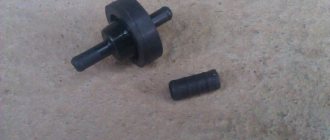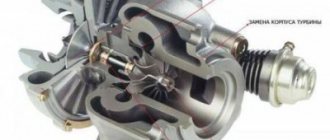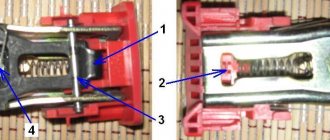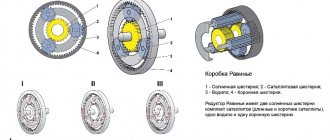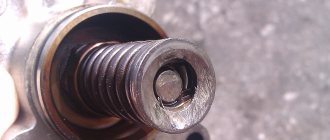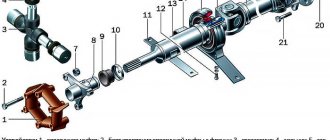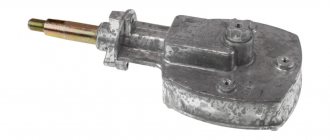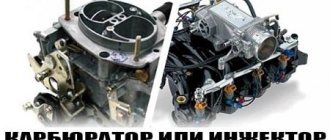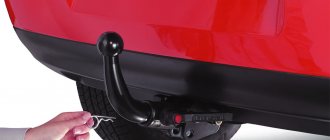When talking about safety measures and protecting passengers from injury in dangerous situations, we often come across information that concerns new-fangled systems for recognizing potential danger and automatically applying critical braking. In addition, trying to increase the safety of passengers and the driver in the car, engineers and designers are trying to strengthen the car body as firmly as possible from deformation and damage. However, many often forget that passive driver protection is one of the main points of safe movement on the road. Seat belts are one of these “forgotten” ways to protect your own health, providing one of the main roles in protecting passengers.
A seat belt is a means of passive protection for the driver and passengers of a vehicle, the main functional significance of which is to hold the passenger in the most static position during emergency braking (due to an accident or simply sudden braking).
The design of almost all seat belts is similar and does not present any particular difficulties in maintenance.
Are seat belts required?
Many people are unaware of the potential dangers awaiting them on the road and ignore the use of seat belts, calling such a method ineffective and ineffective.
Someone even cites statistics about the supposedly increased injury rate of seat belted passengers during an accident. Of course, you should not exclude possible risks of injury.
This is especially true for people who use incorrect gripping methods, and according to statistics, more than 40% of passengers do not know how to properly secure their body with a seat belt. However, this is nothing compared to the potential protection from use. More than 70% of rescues in critical accidents are due to the use of this passive device.
How does a seat belt work?
The job of seat belts is to clearly hold the passenger’s body in a constant place (in the seat). During an accident, the passenger's body will move forward according to the inertia of movement, and in a rollover collision, the body of an unbelted passenger can also cause damage to other participants in the vehicle.
In addition, holding the passenger in a static position makes it more likely that the airbags will properly and timely restrain that passenger, which significantly increases their level of impact in preserving the life of the passenger. The seat belts themselves are created using stretchable fiber, which absorbs additional kinetics due to the counteraction of two bodies. When considering the seat belt system, one should not forget about the so-called energy-absorbing device, presented in the form of shock absorbers and extensions.
The fixation of the strap to the body should not be disturbed by possible objects, bags, packages. Holding children or pets in your arms can also cause injury to them and to you.
Innovations in passive safety
The world's leading automakers are working every day to improve all vehicle safety systems. A relatively recent innovation is pretensioners, but they are no longer new.
Innovative belts that simultaneously serve as airbags are already being actively tested.
The essence of the system is to instantly fill the belt with gas, which allows you to increase the area of contact between the belts and the body, as well as evenly distribute the load, reducing the likelihood of injury.
More expensive vehicle models in the future will be equipped with self-adaptive pretensioning systems that independently adjust to the physical parameters of the seated person. The computer calculates the required force to hold the body at the time of the accident.
Types of seat belts
Potential interest in the first prototypes of this device awakened designers and engineers, who began to slowly improve the first models of belts, but they were still far from perfect. As a result of many years of history of creation and modification, several types of this device have come to us, each of which has both its advantages and disadvantages. Here are some of them:
- Two-point seat belts (sometimes called “lap belts”) are the most outdated of all currently existing types of seat belts. However, it can be found not only on outdated car models, but also on modern car products. As a rule, they are used to equip the rear seats, especially the middle seat. It is located at the waist, and is usually attached from right to left. It has a sufficient list of inconveniences during use, and does not provide a guarantee of keeping the passenger in a stationary position during an accident. In addition to cars, lap seat belts can be found in public transport or airplanes.
- Three-point seat belts (commonly called “diagonal lap belts”) – the design of these seat belts is very popular among automobile manufacturers, and when you imagine a seat belt in your head, you most likely mean this type. Its main characteristics are its original V-shape arrangement, so the belt distributes the load evenly over the entire rim. This type of 3-point belt is considered a universal seat belt, as it fits all seats, both in the front passenger row and in the rear.
- Four-point seat belts - it is quite problematic to find such a device on production cars. As a rule, these types of seat belts are used when equipping special vehicles, sports cars, or SUVs. The principle of operation of a 4-point belt comes from the name: such a belt is attached to the seat at four points, which keep the body from possible rollovers and strong impacts.
- Five-point seat belts are a highly specialized type of passive safety, which is equipped with special seats in expensive supercars, or child seats. The 5-point seat belt includes a set of two perpendicular lap belts that originate from the shoulder, as well as one additional one located between the legs.
Modern developments by manufacturers make it possible to provide seat belts with an additional inflatable system, which will reduce the risk of possible damage due to the inertia of the passenger.
2-point
The two-point seat belt was one of the first to be installed on production vehicles (TS). The effectiveness of this type showed the least results. In total, 2 types of RB such fastening systems are provided.
In the first option, the passenger is fixed in the lumbar region transverse to the seat. One mount was located in the sill or side pillar area, and the other was located between the front seats. For the convenience of fixing the RB, the security system included a lock with a latch.
The disadvantage of the design is that the strap only held the lumbar region, and in an accident the person continued to move the upper part of the body by inertia in the direction of the steering column or panel. Thus, it is simply impossible to avoid injury, although it is possible to keep the body from flying out.
The option with a chest strap provided for the installation of fasteners on the side pillar and between the front seats. In the event of a collision, the RB guaranteed the retention of the body, but the likelihood of the person fastened slipping under the belt increased, which also contributed to the high incidence of injuries.
Seat belt arrangement
In fact, the conventions that the creators of such devices like to surround themselves with are nothing more than classification. In reality, the seat belt mechanism is a collection of several elements that interact with each other. The main elements of a seat belt are:
- strap;
- latch;
- retractor mechanism;
- fastening (bolts, hinges, etc.).
The coordinated work of each of the elements allows you to ensure maximum efficiency of the seat belt. In addition to the above parts, the design of the device uses the interaction of a pendulum and a flywheel, which does not react to the displacement of the coil fixation levers. A ratcheting mechanism is also used, which during an accident blocks the pulling of the strap axis (you can test it by trying to sharply pull the belt back).
The photo shows a classic example of a multi-point safety belt.
Seat belts for children and pregnant women
The effectiveness of seat belts is determined by the most important factor - our own life and health, as well as those who are in the car with you.
Proper protection from harm for those who especially need guardianship protection is also an important factor. We are, of course, talking about the youngest passengers, as well as pregnant women who, due to the physiological characteristics of their bodies, cannot count on the safe use of conventional 2-point or 3-point seat belts. Many people ask at what age can children use a seat belt. The fact is that a person must wear a seat belt, regardless of age, but the youngest require special equipment for this. Children under twelve years of age must be transported in a vehicle in child seats equipped with multi-point lap belt systems, and which must be specially selected for the weight and height of the child. As in the case of an older passenger, failure to use seat belts to restrain children is fraught with criminal liability and a fine depending on the circumstances.
As for special seat belts for pregnant women, there are many analogues in car stores. Their secret is that the load is distributed from a different angle, without damaging the stomach or causing significant damage in the event of a dangerous situation.
Seat belts for pregnant women allow you to relieve the usual places, while protecting the health of both the fetus and the mother.
Design features and varieties
Seat belts began to be installed on cars at the dawn of the automotive industry. The first attempts to develop a simple protection device were made at the very beginning of the 20th century, but at that time they did not show decent results, and continuing research in this direction became impractical.
The second round of interest in this type of security mechanism appeared in the last century. The device was offered as an additional option, and not a mandatory element of the entire car design. Only after some time the strap began to be installed as basic equipment.
Automotive researchers have considered replacing belts entirely, and alternatively using only panel-firing airbags. But numerous tests have shown the low effectiveness of using pillows independently, as opposed to using them together.
Now seat belts (SB) have become an integral part of any car, which allow you to keep passengers in the seat, regardless of the emergency situation that has occurred.
The main component of the passive safety device is fibrous polyester tape. This material has characteristics that allow it to withstand high loads and is also less susceptible to mechanical stress and tearing. The strap holds the body in a fixed position, preventing it from moving forward in a frontal collision.
Another important fact is that the RB prevents the possibility of a motorist or passengers inadvertently flying out of the vehicle, and also ensures the impossibility of a collision with the structural elements of the car.
A complete RB design includes:
- fixed and movable safety equipment attachment points;
- lock;
- reels that have an inertial tension function that allows you to move smoothly on the seat;
- limiters;
- pretensioner
The above elements appeared as the automotive industry developed, and even today, not all cars have a passive safety system that combines each of them at the same time.
What in the end...
It is important to decide for yourself that the use of a seat belt is not a condition of malicious traffic regulations, which are only allowed to burden unfortunate motorists.
First of all, this is our own protection from possible damage that awaits us at every corner. An airbag is not always able to protect us from injury, since the inertial force of an impact can displace the passenger's body away from the deployed airbag. The consequences of significant tugging on the body of a passenger or driver are negligible compared to the damage to an unbelted person. Another common opinion is that some argue that it is not necessary to wear a seat belt while in the back row. Even despite the protective barrier in the form of a seat in front, an unrestrained rear passenger still has a high probability of flying through the windshield or receiving other life-threatening injuries.
Holding a child in your arms in the hope of his safety is also not worth it. Even while at minimum speed during an accident, the risk of letting go of a child is unusually high, as a result of which the child can receive severe injuries.
Future security
It should be noted that the process of improving systems does not stop. Today, innovative belts are being developed, which upon impact are filled with gas, turning into a kind of pillow. There are recent developments related to the introduction of electronic adaptive pretensioner systems. Using special algorithms, they are able to determine the weight of the driver or passenger and automatically set the holding force in the event of an accident.
Experts predict the release of new products in the near future, but time will tell whether they will become as popular as Nils Bohlin’s invention...
